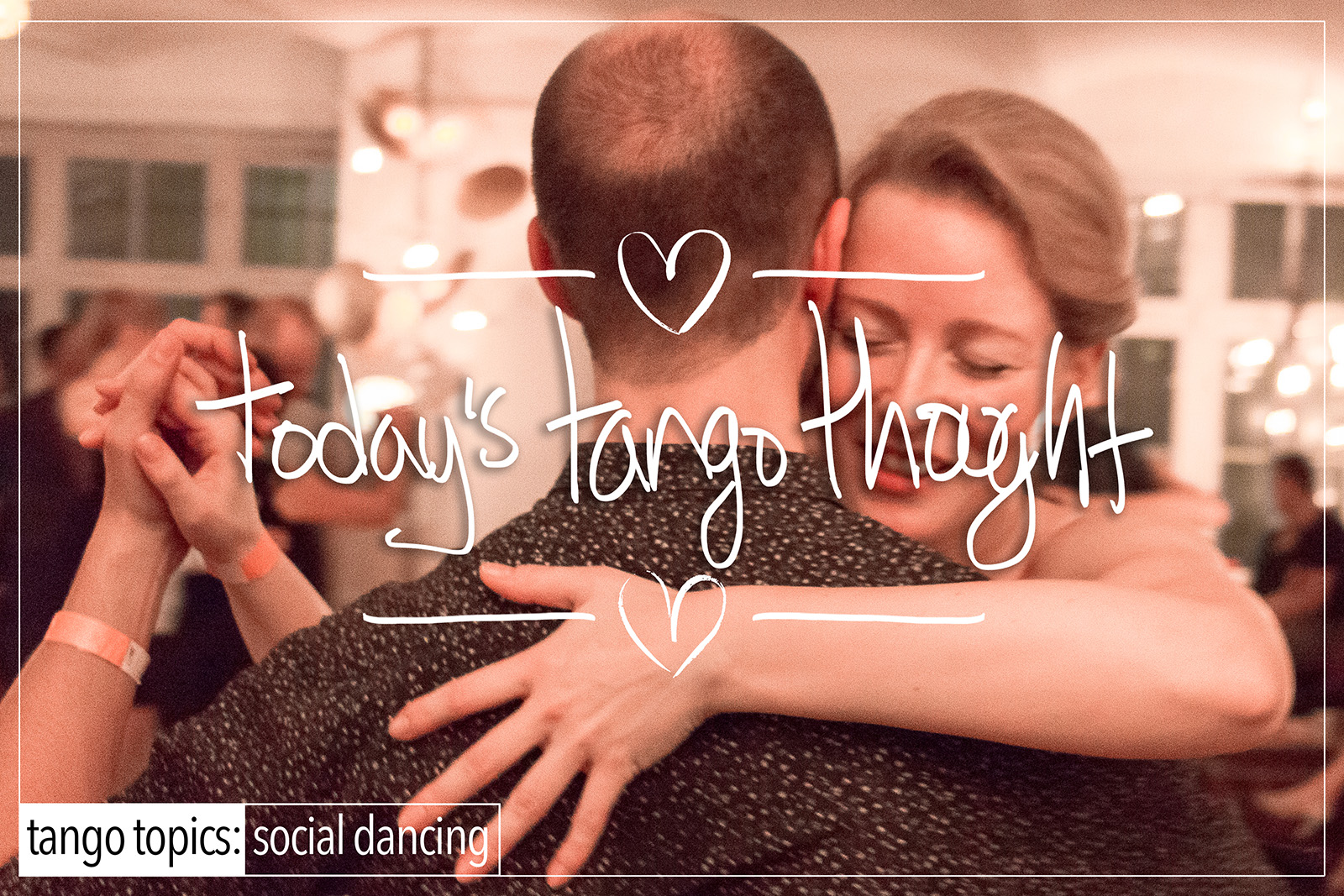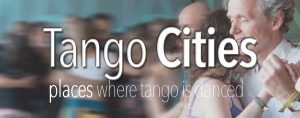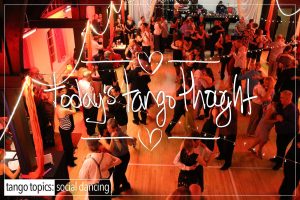The Encuentro / Marathon Scene….and the “HOW” do you get into it in Europe…
and really the rest of the world…
As you read this, Europe has more Tango Marathons and Tango Encuentros that happen every weekend, sometimes 2 or 3 different events occurring on the same weekend, and here’s the kicker, they’re usually fully booked months ahead of time. In order to get into those events, if you wanted to go, you’re going to have to do a bit of legwork on multiple levels: Work on your technique (leading or following), work socially (facebook postings), and work to make a name for yourself online. Below is a FIVE STEP PROCESS that you’ll want to follow if you want to get into the Encuentro/Marathon scene in Europe to enjoy what can only be described as “DELISH”!
[notation: This post is only one way to get into the Marathon and Encuentro scene. There are a few pathways, but usually those pathways are about knowing someone who knows someone who knows someone that can sort of show you around a bit. Uuuuuugh. This particular method has several advantages from the universal “go meet this person and then dance here, here, and here”. It tells you why you want to do the things that it suggests. There are some that will argue with item #2 below as an entry point. But understand something this pathway isn’t reliant on anyone else, except yourself. This particular pathway is the most open and friendly of the pathways that doesn’t seem so daunting due to all-inclusive aspects (lodging, location, and the class of dancers that populate it), not to mention the prices!]
Step One
Ideally, you’ll want to clean up your dance before you start down this pathway. Even though the entry point (step 2) is a very welcoming environment, you’ll still want to clean up your dance.
“Clean up” ? You already know what this means to a certain extent. However, if you don’t get it, understand this: You know you have issues. You know you have areas that aren’t exactly up to snuff and there’s no point in trying to cover up about it either. Trust that the moment you’re in someone’s embrace they’re already aware of your issues. Correction: The moment you’re in advancing dancer’s embrace, they’ll know about your issues and try to compensate for it. So let’s dispense with your ego and get right to it, shall we ?
First and foremost “Clean Up” means redressing your walk AND your foundational movements to make them more stable and visually appealing.
Secondly, it deals with your embrace, and more importantly the loosening of it to the point where you don’t need it for stabilization, pulling, pushing, compression, or using it to keep your partner with you. The less you use your embrace for these purposes the more freely able you are to dance. Saying that, and then doing it, are two very different things by the way. Intellectually you may have become aware of this fact, doing it, religiously….that’s a whole other ball of wax! The embrace itself is where 60% of all your issues exhibit themselves. However, it is your walk and the stability of that walk which is where 100% of your issues generate themselves. The difference ? Is that the walk is generating your issues, the embrace is where those issues are showing up!
Thirdly, you must have a command of specific vocabulary for the Encuentro environment, and separately for the Marathon Environment. This command, if you will, is more about clarifying your understanding and execution of the Following ideas, and not necessarily learning them for the 1st time. The ideas ? The 6 ways of Walking, Milonguero Ochos, Milonguero Turns, and the Argentine Cross. And if you want to add a little variation to the equation: The Ocho Cortado, Media Lunas, and Close Embrace Sacadas. For the Marathon environment, it’s a slightly wider vocabulary spectrum that may include Colgadas, Volcadas, Wraps, Ganchos and most certainly a wide variety of Boleos! It should be noted that you don’t need to possess all of these things, but let’s just say that having mastered them and using them on a regular basis…will help you out later on.
Fourth and lastly, understand that this is about ‘Social Dancing’ with a near-exclusive, if not extreme, emphasis on Musical Interpretation within the line and lane of dance. Let’s be clear about something when we say “Musical Interpretation”, this isn’t about stepping on the beat and then stopping at the pauses and starting up again. This is, however, about creating a latticework of ideas that align with what’s happening musically. Most people don’t do that. They dance haphazardly to the music in a random fashion that has a few moments of “hey that worked”, but doesn’t. This is not that. Musical Interpretation means hearing X, doing Y, and then co-creating Z from within some kind of actual structure to enhance what’s happening musically. It means thinking out what you’re going to do ahead of time and then working it so that it does. It means knowing the music, knowing the orchestra, knowing their style and peculiarities and then working that. This is a component you’re may not going to get from your teacher, from a weekly class on tango. There are only a few ways that this stuff starts to happen. One of them is by understanding what you’re listening to and for, and the second of them understanding what you can do with those musical ideas.
By The Way — Tango Topics provides both of those pathways. First is the-what-to-listen-for part. And second is the-what-you-could-do-with-it part. As a subscriber, you have access to both of those ideas.
Why is this fourth part important ? Because these events are about how you interpret the orchestral theme, and what you can do with them to co-create a pleasant dancing experience. That’s why this stuff is important. It should be noted that the ‘creation’ part is where most people get tripped up, they have no idea what to do, or where to begin, or even how! Again, not to sound like a broken record, that’s where Tango Topics has you covered. A subscriber has access to those tools.
This is cleaning up and redressing your dance from a technique perspective as a well as a musical perspective. And so that we’re absolutely crystal clear here, this is going to take you about a year of your life. This is not something you are going to master inside of a month or two of one-off private lessons with a teacher. No. You need work. It’s that simple. If you want to up your game, this is the only way to do this. If you want to play in this, seemingly perfectionistic playground, you need to follow this guideline, religiously: Daily solo practice, twice weekly private practice with a few partners where you video your dancing and are honest about what you’re seeing, going out social dancing to every local event, and of course a subscription to tango topics wouldn’t kill you either, to show you what you want to look like and why. 😉
Step Two
Get thee to El Corte. And in specific about 6 Chained Salon Weekends in a row, preferably. Oh, and going to International Week and/or Teacher’s Week wouldn’t kill you either! What’s a Chained Salon Weekend ? Read about El Corte and the Chained Salon here.
The reason why you’re going to El Corte is twofold:
a.) Solely for the ‘Social’ aspects of the dance. Getting to know people and to network a bit. This is a very welcoming environment that is one of the more non-judgmental tango scenes that you’ll ever run across. It’s also one of the more friendly tango environments that welcomes all wonder of dancers and their expression of the form. El Corte is a great gateway to the European scene itself. This social aspect of Tango will lead to people inviting you here or there, or starting to engage you socially outside of El Corte. This comes in handy in step 3 and 4.
b.) The classes being offered by Eric Jorissen. You want to do this. Not kidding. There are very few teachers that TangoTopics recommends, this teacher is one of them for a variety of reasons. Most notably, what Eric is talking about the way that he’s talking about it (which is the important part) will do wonders for you actually learning some things that you may not be aware of. It should be pointed out that these seminars are packed, they’ll be about 150 to 200 ppl in the room. This is not a tiny little pre-milonga class where you’ll get to swap partners and learn a step, a pattern, or a figure. This is deep tango knowledge that you actually want to use in your dance going forward. Going to this seminar series will help going forward.
El Corte can be the Gateway to Tango in Europe. If Berlin is the Captial, then El Corte is the Gateway to that Capital city. And so that we’re clear on this…it’s a long, long, long, long, long way to dancing in Berlin with any level of success. So El Corte is a desirable stepping stone to the meeting of people and getting your foot in the door, socially. How you dance when you’re in the door is the reason why step one exists. So a good place to build a reputation of how you dance is at El Corte. There are many dancers there from all across and around the world that you’ll meet, and those dancers will meet you, dance with you, see you dance, and become friends with you. There is no other great melting pot in Europe that is welcoming and open as El Corte is. Start there.
Step Two is slightly questionable because it precludes that there aren’t any other viable passages into the more refined dancing scenes in the world. And that’s not the case. There are. It should be noted that every country has a version of El Corte, or every continent. There are a few in China, Japan, Russia, one or two in the United States, South Ameria, New Zealand, Australia, etc. They do exist in varying forms. Like for instance in Denmark, the toy of choice is M2, or in the states it’s probably Tango Berretin in Portland, OR, or The Beat in Berkeley, CA., or in Germany where they’ve raised the bar of the Social Tango experience to an artform…there are several through the country spread out in different cities. But remember the goal here is to transit to Europe and dance in the European environment. So we’re focusing on El Corte here for that sole purpose. So you could, if you wanted to make this 5 step process more global, go play in these other centers, and then apply the rest of the logic to the specific country. 🙂 The process works anywhere…. 😉
Step Three
Facebook/Social media. If you don’t have a favorable picture of you dancing on your facebook profile, where you see your face in relation to your partners, in several environments, from several milongas, or events as your profile picture, then you have Tango PR problem. So….that means you have to get one. And please for the LOVE of CHRIST do not do any of the typical tango poses. A natural shot of you, well lit, social dancing in someone’s embrace with a nice, warm, smile will do the trick. Your Tango Social Media profile, and in specific a Facebook profile, and all your pics, act as a tango Resume/CV of sorts. It tells people looking at your profile that you’re serious about the form to a degree. Think of it this way, your profile is your tango calling card. People see it and are immediately able to distinguish you from 9 million Mark or Mary Smith out there. More and more event organizers are putting their events on facebook, and they’re creating their communities via facebook groups and not via email or paper flyers, or post cards. So having a facebook profile that shows you dancing, and in several dancing events, and embraces, gives people a way to find you after an event, friend you and engage with you further to find out where you’ll be going next. It’s also a way for you to find, friend, and engage with people that you’ve enjoyed dancing with for the same reasons. It works both ways.
It’s also important to fill out that profile and be active in it. A few pix here and there are not enough. Show people that you’ve engaged in local, regional, and perhaps national events. Yes, that means you actually have to travel a bit. Yes, all of this stuff takes time, money, and practice, but the end result is, as one Tango Topics Intensive Study Student put it, “It changed my life and so worth it!”.
Next it’s important that you start interacting with a variety of facebook groups that are dedicated to Argentine Tango. It goes without saying, but we’ll say it anyway, that dancing alone is not enough. You have to … eeeek … be social, be … eeek … outgoing. That may come as a shock to some of you that are shy by nature. You have to step outside your normal persona. You have to get involved in the discussions that are happening in these groups. Engage. If you like something, say it! Don’t just click “like”. You can not just sit behind your keyboard and be passive, you must engage. This is not interacting. This is reacting. You want to share what you know, and get to know people, get involved, listen, learn, and engage.
The reason you’re doing this is multifaceted but the simplest reason is for people to get used to seeing your name, and oh yeah, you want to share your real name not a pseudonym either. However, the biggest reason you want to start doing engaging this way, is so that when you register for an event, you’re not necessarily an unknown, assuming that you’ve followed steps 1 and 2 religiously.
Step Four
Start registering for Marathons, right NOW, and then actually go. Get the thought out of your head that you’ll just register a few weeks beforehand and that you’ll go and have a lovely time and …. NOT! GOING! TO! HAPPEN! Understand this > Most marathons are fully registered 8 to 10 months before the event happens! Usually, they’re full up with Followers by the end of the first day that registration opens, sometimes within the first hour depending on how popular the event. So the sooner you do this, the better off your chances are. While Leads can wait a little while, the reality is that you want to register on the first day as well. The reason has everything to do with the fact that the organizers of these events need an accurate headcount as soon as is humanly possible. And that generally means about 10 minutes after they say “REGISTER”, and then they open registration. It is entirely possible that you may be waitlisted for a variety of reasons, at the top of that list is because no one knows you or that there are too many followers. This is why you do Step 2, it helps alleviate the no-one-knows-you line of reasoning on multiple levels.
So the next question you’re going to ask is WHERE DO YOU FIND A LIST of MARATHONS ? Good question. A really good first stop to get an idea of when things are happening is The Marathon Event Calendar at Tango Marathon Directory run by Daniel de Kay. The calendar is up to date and usually, very spot on. Still another place to look for events is TangoPolix.com run by Daniel Mera De Agustin. The only downside to this particular resource is that the only way that an event will be listed there is if the event organizer is using TangoPolix software to manage ticket sales. 🙁 Unlike The Tango Marathon Directory which has no financial interest in the event’s success or failure. TangoPolix makes it’s money from ticket sales, it’s more of a TicketMaster for Tango Events. The only other place to look for events is in a wide range of tango Facebook groups. There are sooooo many where do you look ? A good place to start is with the List of Cities that host Milongas on a weekly basis and keep on top of them. Fortunately for you, we have such a list, right here. The downside of these tango groups is that you have to keep on top of them to see what’s going on and to pay attention to the listings.
Now the question is why are you registering for Marathons if your goal is to get into the Encuentro scene ? The answer is because there’s a fair amount of cross-over between the two groups of dancers, and one will help with the other, but not the other way around. Meaning that in order to get your name out there, you do need to mix it up a bit in the Marathon scene. The encuentro scene is a bit more exclusive than the Marathon scene. Just a bit, by certain estimates but still there is a good deal of cross-over from the Marathon dancers towards the Encuento scene. So start registering and then going to the Marathons in Europe.
Step Five
Start looking at the Encuentros and then…start registering for them! You may not get in, but you have to start somewhere….right ? Where do you find these events ? A good place to start is Melina Sedó’s Encuentro List that she’s been publishing for the last few years. Another resource for you to consider (courtesy of Denise Della Mora) is the Encuentro List provided by Associação Promotora de Tango Social. Still, one more resource for your perusal is Linda Garwood‘s Encuentro List. Still another place is that more and more events are using facebook as well, are advertising their Encuentro via their local facebook group and other facebook groups to get attendance. So, it’s a good idea to use the Tango Topics Facebook Group List that we’ve put together, and to get involved and pay attention. If there are more that you know of you can add to the Encuentro list by providing the URL to us here.
Let’s be clear about something the Encuentro environment is very different from the Marathon environment in a few key respects. First and foremost is that the musical selections are from a seemingly limited slice of tango music (sometimes, not always). Secondly, the dancing environment emulates what we believe to be Buenos Aires style dancing only a much more refined version of it. The focus is on Social Tango and geared towards smaller, compact dancing. And so that we’re clear on this one: There are generally NO HIGH BOLEOS (Social Boleos Only), NO GANCHOS, NO VOLCADAS, NO COLGADAS, limited open embrace dancing. Cabeceo/Mirada is highly suggested and heartily encouraged and re-enforced. The Encuentro is a limited event. Meaning that unlike the Marathon were the dancing doesn’t stop, the Encuentro does! Think of it as a limited series of Milongas where you have about 4 hours to get to your intended dancing partners, this is less about being social and more about the dancing part.
The Five Steps are:
1.) Clean up your Dance!
2.) Get to El Corte.
3.) Facebook/Social Media Interactions.
4.) Register for Marathons.
5.) Register for Encuentros.
Where To Stay ? You can do what the author of Tango Topics did for years, stay in Hostels in Europe. They’re insanely cheap, anywhere between 15 and 20 dollars a night, and they’re waaaaay better than the American versions that’s for sure. And they’re cheaper than AirBnB accommodations. Of course a Hostel may not be possible in the host city of an event, but if it is….then go do. If not, then AirBnB is your best option. Let your wallet be your guide on that one.
How To Get Around Europe ? Mostly you’ll be transiting through Germany in one way, shape, form, or another to get to your intended locations which will more than likely be a Marathon in the meantime or to get to El Corte. You want to get yourself a German Rail Pass or what’s known as a ‘Bahn Card‘. Get the 25% off in 2nd Class fare. It’s about 60+ euro at this point and will save you more money than nothing at all. You could buy the 50% off bahn card, but unless you plan on spending longer than 6 months in Europe, it doesn’t pay for itself because you won’t use it that much to justify the cost in our opinion, at 255 euro…it’s a bit pricey. The German rail system intersects with all other rail systems, you could fly but that’s just crazy money, so taking the train will get you used to hearing different languages, and seeing a bit of the country-side….so give yourself a day or two on either side of your marathon/encuentro events for travel into the next event.
In Between Events ? Ideally you’ll want to stack events or registser for events close to one another. Sometimes that may be possible and other times it isn’t. So what to do in between events ? Go dancing in the local city scenes. Again, this is yet another reason to subscribe to the facebook city groups and get involved. This is a great way for you to introduce yourself to a group and tell people that you’re coming into town, and ask what milongas are good for the dates you’re coming for. “Hey My name is….and I’m coming to your city on XXX to XXX, What Milongas are happening that you’d recommend ?”. Something similar to that. Besides you might meet some really cool people that way. One piece of advice here, is that you may actually want a week between events so that you can savor the local scenes in between events and around events. So a good idea is to plan your travel route to deliberate pass through larger cities and stop and dance there for a few nights. Remember, you’re there to dance…so go dancing. Besides, this gives you another opportunity to meet more people and to network and to make friends.
Cash ? A good rule of thumb when traveling is to bring cash with you. But you can always withdraw from your home country’s banking system, just know that you’re going to incur a charge or transaction fee PLUS an exchange rate fee. So a good rule is to bring about 500 to 1000.00 of euros with you before you leave your home country.
How To Pay for Marathon/Encuento Events ? TransferWise. If you’re a US Citizen going to Europe, you’ll find that a lot of organizers will either offer one of two ways to pay for the event. 1.) PayPal. Sometimes. 2.) Bank Transfer. This is a very common way to pay for things in Europe. It’s not so common in the United States because we just pay for things with our credit cards. Coming from the states, our bank transfers usually have a fee attached to them, 2o or 30 dollar fee, usually. So one way to avoid that fee, is to use a service like TransferWise. It’s safe, secure, muuuuuch cheaper than what your bank will charge you to do the same thing!
Tango Topics Opinion. We need to address Step 1 a little bit more because it does require a bit of understanding: Don’t take what’s about to be said personally, or that this page is disparaging you in any way, or being arrogant, or a perfectionist: You have issues.
You may not know that you have issues, you have fears that you don’t know what you’re doing, or that you feel like an imposter, or that you’re feeling inept and outclassed (and you will once you step foot in the scenes that are being referenced), but you have issues. Mostly it boils down to 2 areas that need to be addressed: 1.) Your embrace (the hanging, the pulling, the pushing, the compression…it needs to stop, asap). 2.) It’s your walk, you’re more than likely unstable and either using your hands and arms for stabilization or micro-stabilization in the walk itself or in turns, backsteps of the molinete, and traveling ochos, and believe it or not, that’s 60% of the dance right there in modern Tango.
In either case, this being said to you, and then you remembering that those things are happening is not going to change a goddamned thing. Not today, not tomorrow, and not next week. That is why you need to study with X because they will remind you of these things CONSTANTLY. And if they don’t then you’re studying with the wrong person. If they’re encouraging you to do this step or that step, and not spending nearly half of your session time with them working on your foundation and correcting your walk, then you know what you’re doing ? You’re trying to please the teacher and not educating yourself properly. You want to create an operant learning environment that forces you to achieve for your own betterment and not for someone else’s. This isn’t about perfectionism, get that thought right out of your head. This is about being a better, far more precise, much more clean, lighter, softer dancer, and far more controlled and contained Lead or Follow than you are today without using your arms and hands to do it either!
It should be noted if all of the above sounds like work, that’s because it is. This stuff can be a full-time job that you really don’t want to have to invest in. Ideally, you just want to show up and dance. Right ? However, in order to do that, you’re going to need a few things, that this walk-through talks about: A guide of some sorts. You’ll need to know where to find the events, you’ll need travel plans, you’ll need a place to stay assuming you’re accepted into the events, you’ll need to make sure your passport is up to date and if it isn’t…get it updated. And that’s just the tip of the iceberg. Then there’s getting the time-off-work, and going for a longer period of time than the event itself to make the trip worthwhile. Are there other events around the same time that you can and should go to as well ? And can you get into those ? And if you don’t, what are you going to do with your time ? There’s only so much sightseeing you can do. Eventually, you’re going to want to dance somewhere locally and that means knowing someone in the area or knowing someone who knows someone that knows someone else that can sort of shepherd you around their local scene who may or may not speak your language.
Uuuugh.
Awwwkward.
This is why this Tango Thought exists, to create a pathway that doesn’t rely on other people and their kindnesses or to impose on anyone else but rather to create a reproducible pathway that can and will generate what you seek to have happen, and also why it’s filled with the opinions stated as fact.
To be fair, there are other pathways that we have eschewed in favor of this method of changing your Tango fortunes. But we do acknowledge that step 2 here does present a problem here that, if we are being fully honest, we have to address. Sometimes, sometimes, the dancing at El Corte may not be to your liking for a variety of reasons, most notably is the fact that it’s a melting pot and there is a focus on being social and not necessarily the clear and clean execution of better technique as some of us would like. And that fact tends to drive people away and look for a better tango environment. This is why we state that there are other pathways. One of them is to head straight for the jugular, Berlin, and take your chances there. While the dancing in Berlin is TDF (to die for), the reality is, and many … many people have spoken to this fact, so we’re not speaking behind their backs, that these folks are a little snobby. While this fact has been covered in a previous post on the topic, it should be not undersold at all. Going that route, without getting your name out there first and foremost is going to frustrate you enormously, endlessly, and you’ll wonder even more why you’re sitting there in the first place. Berlin is not for the faint of heart. It’s just not. The reality is that you do have to have your collective shit together to play in that universe, and you need to be known before you walk in the door. And yes, so that we’re clear, it is a universe. It’s a small universe, but a universe just the same. Being known will help, a lot. It won’t change all of your tango fortunes but it does go a long way towards changing what you understand about the tango universe.
At the same time, there is the tried and true method of the personal introduction, and then the personal guide. Both of these methods are usually taxing and ingratiating and not to mention time-consuming for the person doing the introducing and guiding. They’re there to hold your hand, as it were, while you acclimate yourself to the environment. No one likes to be guided around by their nose, but that’s exactly what you’re forcing someone to do. While you slowly and certainly take off your training wheels so that you get to know people. We don’t want to make this sound bad put yourself in their shoes for just a moment. You’re introducing someone that you know personally and through tango, but you haven’t danced with them more than likely (especially if it’s a same to opposite gender introduction – male with male, female with female, introducing male to female, female to male) and you’re going on trust that they’ve sort of got their collective shit together in order for you recommend them dancing with your nearest and dearest. Sometimes this works, and often times it’s an awkward mismatch at best. Uuuugh. So the reasons why these two methods are discarded is because they don’t rely on someone else’s time, or opinion, but your own abilities.
That said, good luck, you’re going to need it. Oh and don’t forget to practice, practice, practice. And subscribing to tangotopics.com wouldn’t hurt either.











